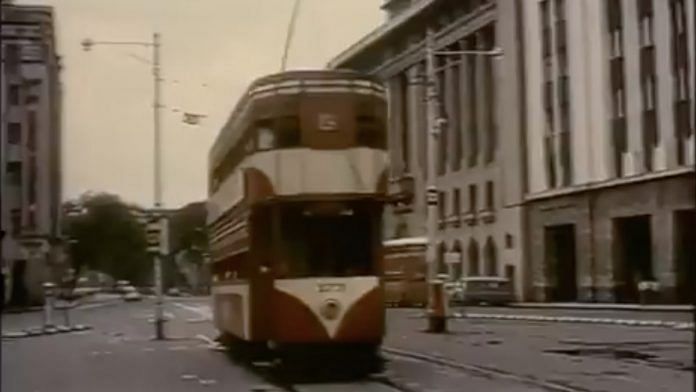Mumbai: Trams could make a comeback in Mumbai with local authorities looking at the feasibility of them functioning as a feeder service within the Bandra Kurla Complex (BKC), a plush business district.
The Mumbai Metropolitan Region Development Authority (MMRDA) is in the process of appointing a consultant to evaluate various light-rail options and trams to help boost connectivity within the BKC.
“BKC now has high footfall areas and is a residential as well as commercial hub. There are two metro stations coming up and there are two suburban railway stations — Bandra and Kurla — in the vicinity. We are looking for best possible options to offer last-mile connectivity within BKC and the consultant should help us determine if trams can be a feasible option,” R.A. Rajeev, metropolitan commissioner, told ThePrint.
He added: “It has been my dream to bring trams back to the city. We should have never dismantled trams, but upgraded them as per modern technical improvements within the public transport. Wrapping up the tram system was the major reason behind the growth in the number of personal four wheelers and two wheelers.”
Also read: How Mumbai did a better job than Delhi in fighting the second wave of Covid
The Bandra Kurla Complex
Till two decades ago, commercial activity in Mumbai was concentrated in South Mumbai, within areas such as Fort, Nariman Point and Ballard Pier.
However, the activity has now move northwards with the development of office spaces in BKC and opening up of mill lands in central Mumbai.
BKC, which falls under the MMRDA’s jurisdiction, has become the financial and commercial focal point of Mumbai, hosting offices of the Reserve Bank of India, National Stock Exchange, ICICI Bank, Bank of America and many others.
According to the authority’s estimates, more than two lakh people commute to BKC every day and almost 20,000 people enter and exit the business district each day.
The MMRDA had earlier tried to introduce dedicated bus lanes within BKC in 2016 to reduce congestion by boosting the availability of public transport. However, while it improved the efficiency of bus operations, the barricades for the dedicated bus lanes were eventually removed due to traffic congestion on the rest of the road.
Also read: Ghatkopar’s good Samaritan — part-time English teacher now runs his auto as free ‘ambulance’
A network that started in 1874
Trams first started running in Mumbai in 1874 and were initially of two types — those pulled by a single horse and those pulled by two horses. The first electrically operated trams came to Mumbai in 1907.
By 1920, when traffic on the roads had started increasing, the Bombay Electric Supply & Tramways Company, which operated Mumbai’s trams, introduced double-decker trams on the city’s roads.
The tram system, known as the common man’s mode of transport, also became a part of the city’s popular culture. In the song ‘Aye Dil Hain Mushkil Jeena Yahan’ from the 1956 movie CID, Mohammed Rafi sang: “Kahin building, kahin traame, kahi motor, kahi mill.”
A tram ran last in Mumbai on 31 March 1964, chugging between Bori Bunder, which is now known as the Chhatrapati Shivaji Terminus, and Dadar circle, which was then known as the Khodadad Dadar Tram Terminus.
In the past several years, when the city’s infrastructure development agencies dug deep for construction work, Mumbai’s old tram tracks resurfaced.
For instance, the MMRDA stumbled upon tram tracks while building the Lalbaug flyover in 2010. Similarly, in 2016, the BMC unearthed tram tracks in South Mumbai’s Flora Fountain area while undertaking road improvement works.
Also read: IAS officer Iqbal Chahal, BMC chief & Mumbai’s Covid hero, was once shunted out by Modi govt



